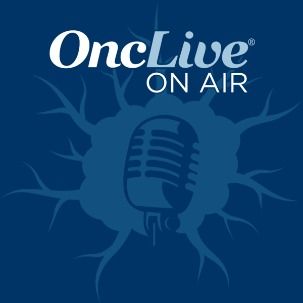Article
FDA Approves First COVID-19 Vaccine
Author(s):
The FDA has approved the Pfizer-BioNTech COVID-19 vaccine for use in the prevention of COVID-19 disease in individuals aged 16 years or older.
FDA

The FDA has approved the Pfizer-BioNTech COVID-19 vaccine (previously referred to as BNT152b2; Comirnaty) for use in the prevention of COVID-19 disease in individuals aged 16 years or older.1
The vaccine has been available for emergency use in this population since December 11, 2020,2 and the authorization had been expanded to include individuals between the ages of 12 years and 15 years, as of May 10, 2021.3
Updated data from the phase 3 trial (NCT04368728) that supported the emergency use authorization were used to support the approval; these findings included a longer duration of follow-up in a larger clinical trial population.
The regulatory agency examined efficacy data collected from approximately 20,000 individuals who received the vaccine and 20,000 individuals who were given placebo, all of whom were aged 16 years or older and did not showcase any evidence of infection within 1 week of receiving their second dose.
Data from the trial demonstrated that the vaccine was 91% effective in preventing COVID-19 disease.
“The FDA’s approval of this vaccine is a milestone as we continue to battle the COVID-19 pandemic. While this and other vaccines have met the FDA’s rigorous, scientific standards for emergency use authorization, as the first FDA-approved COVID-19 vaccine, the public can be very confident that this vaccine meets the high standards for safety, effectiveness, and manufacturing quality the FDA requires of an approved product,” acting FDA Commissioner Janet Woodcock, MD, stated in a press release. “While millions of people have already safely received COVID-19 vaccines, we recognize that for some, the FDA approval of a vaccine may now instill additional confidence to get vaccinated. Today’s milestone puts us one step closer to altering the course of this pandemic in the United States.”
In the observer-blind study, individuals were randomized 1:1 receive either the vaccine or placebo.4 The study was comprised of 2 parts. In phase 1 of the research, investigators sought to determine preferred vaccine candidates and dose levels, and in the phase 2/3 portion, they assessed the efficacy of the vaccine in an expanded patient population.
The primary end points of the trial comprised COVID-19 infection prevention in those who had not been infected with SARS-CoV-2 prior to vaccination and prevention of the virus, irrespective of whether patients had prior SARS-CoV-2 infection. Secondary end points included prevention of severe COVID-19 in those patient subgroups. Additionally, investigators are examining whether the vaccine is also able to prevent SARS-CoV-2 infection.
Earlier data that supported emergency use of the vaccine showed that among 43,448 individuals, the vaccine showcased a 95% efficacy with regard to COVID-19 infection prevention in those who did not have prior infection 7 days or longer following the second vaccine dose.
Efficacy with the vaccine observed in the overall patient population proved to be consistent across various subsets examined, including age, gender, race, ethnicity, baseline body mass index, or the presence of other underlying comorbidities.
Of a total of 36,523 patients who did not showcase any evidence of existing or prior SARS-CoV-2 infection at the time of vaccination, 170 COVID-19 cases were reported with onset at least 7 days after the second dose was received. Of those cases, 8 were reported in those who received the vaccine and 162 in those who were given placebo; this translated to a 95.0% vaccine efficacy (95% CI, 90.3-97.6).
Additionally, among patients with and without evidence of prior SARS-CoV-2 infection, COVID-19 was observed in 9 vaccine recipients and 169 placebo recipients, translating to a 94.6% vaccine efficacy (95% CI, 89.9-97.3).
The cumulative incidence of COVID-19 cases over time, in both arms, began to separate 12 days after receipt of the first dose. Moreover, a 52.4% vaccine efficacy (95% CI, 29.5-68.4) was reported between dose levels 1 and 2, which indicates early onset of a partially protective effect of vaccination. Maximum protection with the vaccine was reported at 2 doses.
Safety of the vaccine was evaluated in approximately 22,000 individuals who were 16 years of age or older and received the vaccine and 22,000 who were given placebo. More than 50% of participants were followed for safety outcomes for at least 4 months following receipt of their second dose. About 12,000 recipients were followed for at least 6 months.
The adverse effects that were most frequently reported by patients included pain, redness and swelling at the injection site, fatigue, headache, muscle or joint pain, chills, and fever. Vaccination was determined to be effective in prevention of the virus and potentially serious outcomes such as hospitalization or death.
The FDA also conducted a rigorous evaluation of the post-authorization safety surveillance information collected regarding myocarditis and pericarditis after the vaccine was administered. The agency determined that the findings showcased increased risks, particularly within 1 week after receipt of the second dose. Notably, the risk is higher in males under the age of 40 years vs females and older males. The risk was noted to be highest in males between the ages of 12 years and 17 years.
Available information from short-term follow-up suggest that the majority of individuals experienced resolution of symptoms, although some did require intensive care support. Data on long-term health outcomes are pending.
References
- FDA approves first COVID-19 vaccine. News release. August 23, 2021. Accessed August 23, 2021. https://bit.ly/3870L3K
- FDA takes key action in fight against COVID-19 by issuing emergency use authorization for first COVID-19 vaccine. News release. FDA. December 11, 2020. Accessed August 23, 2021. https://bit.ly/3gWWfsE
- Coronavirus (COVID-19) update: FDA authorizes Pfizer-BioNTech COVID-19 vaccine for emergency use in adolescents in another important action in fight against pandemic. News release. FDA. May 10, 2021. Accessed August 23, 2021. https://bit.ly/2XKtTff
- Pfizer and Biontech announce publication of results from landmark phase 3 trial of BNT162B2 COVID-19 vaccine candidate in the New England Journal of Medicine. News release. Pfizer and BioNTech SE. December 10, 2020. Accessed August 23, 2021. https://bit.ly/3qNpUbN








